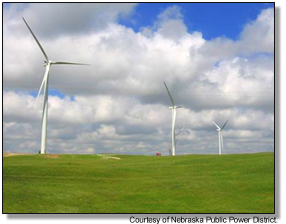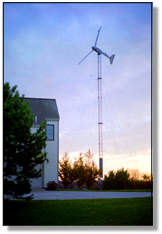Incentives and Policies for Encouraging Wind Energy Generation
 With the Unicameral’s unanimous passage of the Rural Community-Based Energy Development Act wind legislation, LB 629, this year, the legislature indicated its strong support for development of one of Nebraska’s under-utilized resources — wind.
With the Unicameral’s unanimous passage of the Rural Community-Based Energy Development Act wind legislation, LB 629, this year, the legislature indicated its strong support for development of one of Nebraska’s under-utilized resources — wind.But exactly what is “community wind development” and how does it differ from other types of wind energy development? According to Windustry, a wind energy resource advocate organization, “community wind” refers to a method of wind energy development that intentionally seeks to optimize local benefits. Typically, these types of projects are locally owned, and sell or offset energy on the electric grid. Locally-owned projects are ones where community members have a direct financial stake in the project beyond just the land leases or local tax revenue. Examples of community wind projects include a local school district purchasing and operating a turbine near a school building, or several local landowners joining together to share the costs of purchasing several turbines.
A number of studies have begun to quantify the benefits of community wind projects. Generally, these studies have concluded that community wind channels the benefits of wind development to rural communities and local landowners. In addition to the diversification of the local economy that any wind development brings a community, direct local investment in a wind project provides significantly higher returns than wages or lease payments.
What Others Are Doing
A recently published report, Community Wind: A Review of Select State and Federal Policy Incentives by Jessica Shoemaker and Christy Brekken for the Farmers’ Legal Action Group, provides an understanding of the current policies and laws in Colorado, Iowa, Minnesota, North Dakota, Oregon as well as the federal government. Nine categories of laws have been identified that impact community wind development:

- Production-based incentives,
- Non-production based tax incentives,
- Special community wind tariffs,
- Government and utility financing mechanisms
- Efforts to increase wind energy demand,
- Standardized utility contracts and procedures,
- Net metering,
- Wind project permitting, and
- Wind property rights.